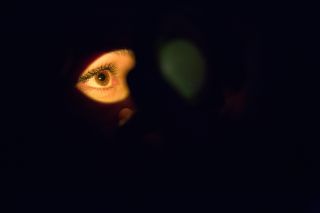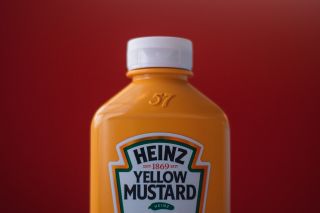Attention
The Psychology of How Marketing Captures Our Attention
Ultimately, it all comes down to contrast.
Posted March 23, 2023 Reviewed by Lybi Ma
Key points
- There are two fundamental sources of attention: endogenous (from within), and exogenous (from the environment)
- Driving exogenous attention in the brain is all about creating sharp contrast.
- These principles can be applied across a variety of marketing contexts, from UX to product packaging
Throughout history, many great minds have remarked on the crucial importance of attention. The Stoics famously proclaimed that “you are what you pay attention to.” The Poet Mary Oliver remarked that “attention is the beginning of devotion.” However you cut it, attention is one of the most precious assets.
What determines what you pay attention to? And how do marketers utilize these features?
While a variety of factors are at play, there's a clear psychology of attention. What you pay attention to comes from one of two sources.

First, there’s endogenous attention, you have a particular goal, and you actively seek out what you want to pay attention to. Think about endogenous attention as going to the store with a particular list of items, you’ll actively seek these out and delegate your attention in their direction.
Crucially though, there’s another form: exogenous attention. You weren’t planning for it, but something from the external world captures your attention. What if, in the store, you find yourself being drawn in to say free samples, flashy lights, or catchy packaging? Your attention now is being driven exogenously.
And it’s this second form of attention that is most often utilized by marketing teams.
How the Mind Pays Attention
The world is a complex, detailed, and never-ending stream of data. We can’t take in all of it, nor would we want it to. The psychologist Timothy Wilson calculates that we’re only able to consciously attend to about 0.0004 percent of the available information at any given time. To cope with this complexity, your brain naturally prioritizes certain elements of the experience over others. To do this, your brain needs to take shortcuts.

You can think of these shortcuts as the automatic drivers of exogenous attention. And the biggest shortcut of all is contrast. Your exogenous attention is driven by what’s different in your environment. A pink dot in a big array of other pink dots doesn’t create any contrast. But a pink dot on a black background? Very high contrast, and therefore, very likely to drive your attention to it.
Creating contrast is all about maximizing the difference between the background, the general environment, and the foreground. At a simple visual level, the brain is biased to pay higher attention to high-contrast objects—white against black, yellow against red, and so forth.
If everything is static, the object that’s moving will drive attention. If everything is moving, the object that’s static is the one that stands out. It all comes back to contrast.
How Attention Is Used in Marketing
Capturing attention is a crucial task in marketing psychology, and here we see the principle of contrast applied in a range of different scenarios and promotional tactics. Think of something simple, like a billboard. What is going to be more likely that you'll pay attention to? One that looks like all of the other billboards along the road, or the one that breaks this pattern?

The latter is the obvious choice, but creating contrast in the consumer world is easier said than done. However, some brands have gone to great lengths to do this; they drive contrast by having a billboard that is deliberately tilted 75 degrees, making it stand out among the standard to be straight and measured. In simple ways, brands can surprise their consumers, create contrast, and ultimately, drive their attention.
Or consider product packaging. When consumers are scanning the aisle, where are their eyes naturally falling? All things being equal, they’re going to be drawn to the highest contrast packaging. It's worth recalling that by definition, contrast is all relative. No single color, design, or package share is inherently "high contrast."
Even if a product is bright neon pink, there's no contrast if everything else on the shelf is similarly colored. And on a shelf of brightly colored neon products, a "dull" gray package design would have the highest contrast, and therefore, would be most likely to drive our attention.
The power of contrast only emerges when the product in question appears different relative to the rest of the environment.
Final Thoughts on Attention and Consumerism
There are a few features of the visual world that appear to naturally drive attention: text in our native language, and faces. These visual stimuli drive quick automatic processing, and as a result, will be likely to divert our attention. Just when we think our minds drift off into serendipity, these fundamental features drive us back to the stimulus itself.
But beyond the relatively few intrinsic features, attention fundamentally is about contrast: Our brains are oriented to what has changed in the environment, or what's different relative to the rest. Given its crucial importance in the consumer world, clever brands have converged on these natural features of our attention, and have designed a range of marketing materials—from promotional tactics to product packaging, that avails themselves of these tendencies of human nature.
The more we can become aware of these as consumers, the more empowered we can be to protect this valuable resource.
This post also appears on the consumer psychology blog NeuroScience Of
References
Posner, M. I. (Ed.). (2011). Cognitive neuroscience of attention. Guilford Press.
Raffone, A., & Srinivasan, N. (2010). The exploration of meditation in the neuroscience of attention and consciousness. Cognitive Processing, 11, 1-7.
Rueda, M. R., Pozuelos, J. P., & Cómbita, L. M. (2015). Cognitive neuroscience of attention from brain mechanisms to individual differences in efficiency. AIMS Neuroscience, 2(4), 183-202.




